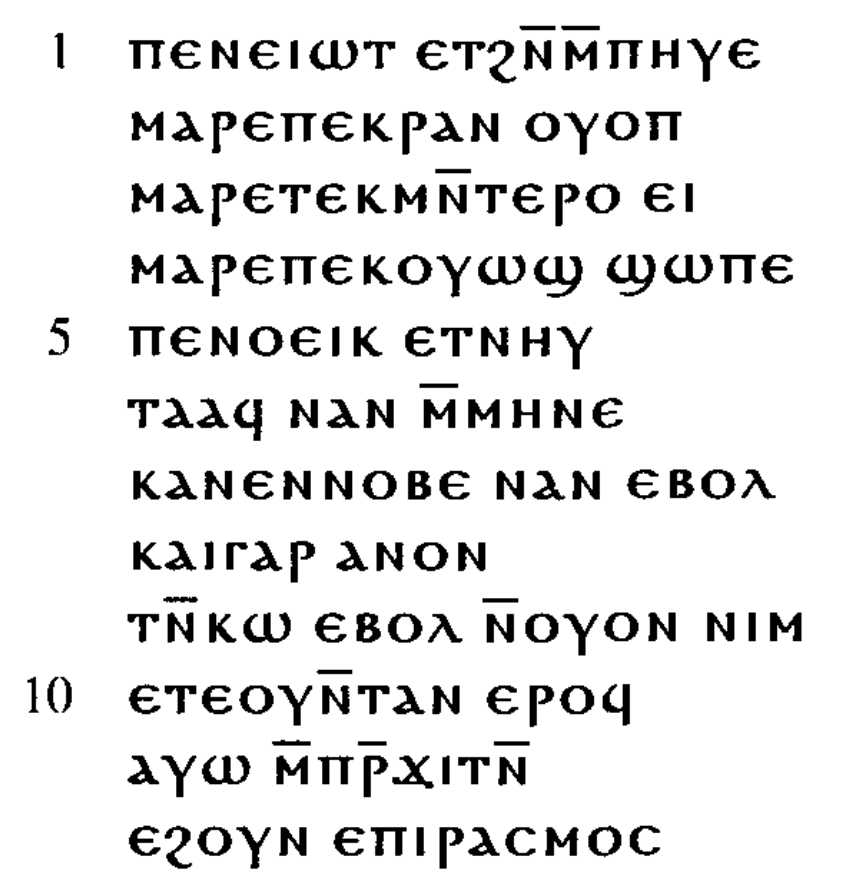So, I don’t imagine you’re reading any of this linearly; I hope not because I’m not writing it linearly. This is absolute Faulknerian stream-of-learning-consciousness that you’re enjoying now. My greatest ambition having been dashed by trying to understand something much too complex in Lesson 19, I know present you something you may already know: the Lord’s Prayer from the New Testament. You might wonder why there are so many religious texts on the blog (at least as it relates to Coptic). The reason why (if you remember from the introduction) is that it is the liturgical language of Coptic Christians, and with the conversion of the Egyptians much was written in this new script about the new religious faith. There’ll be more about monastic life and Shenoute (those are topics for rainy days). Now, on to the prayer!

This is the Coptic version of the Lord’s Prayer from Luke 11:2-4. Below are two screenshots of the text with the morpheme boundaries represented by hyphens.


The line over the letters represents a schwa sound and usually appears over the consonants BLMNR (read it as Blemner) (Layton 2006, 5). The best thing to do at this beginning stage is to look for patterns. Are there elements that repeat? (Yes.) Are there words that show up in more than one place? (Yes.) Are there variants of the same word that might be ever so slightly altered? (Yes.) Ok, lesson over.
No, just kidding. The literal translation on the right gives good clues as to what might be happening. See if you can find the variations that might show that Coptic uses grammatical gender. The agglutinating nature of Coptic also means that pronouns get tacked onto the beginnings and ends of words (and the middle–who are we kidding, right?). You might also be able to pick out a couple of Greek elements (only just maybe). You also see that prepositions can be tacked on to the front of nouns or have a letter added to them that represents its object. Articles are also affixed to words. From just these general observations, the differences between Coptic and English begin to seem even more vast. We’ll manage though. I’m working on a way to start keeping track of vocabulary or easily represent it here so that it’s easy to see and study. I’m not sure how to do that just yet. So, more soon.
